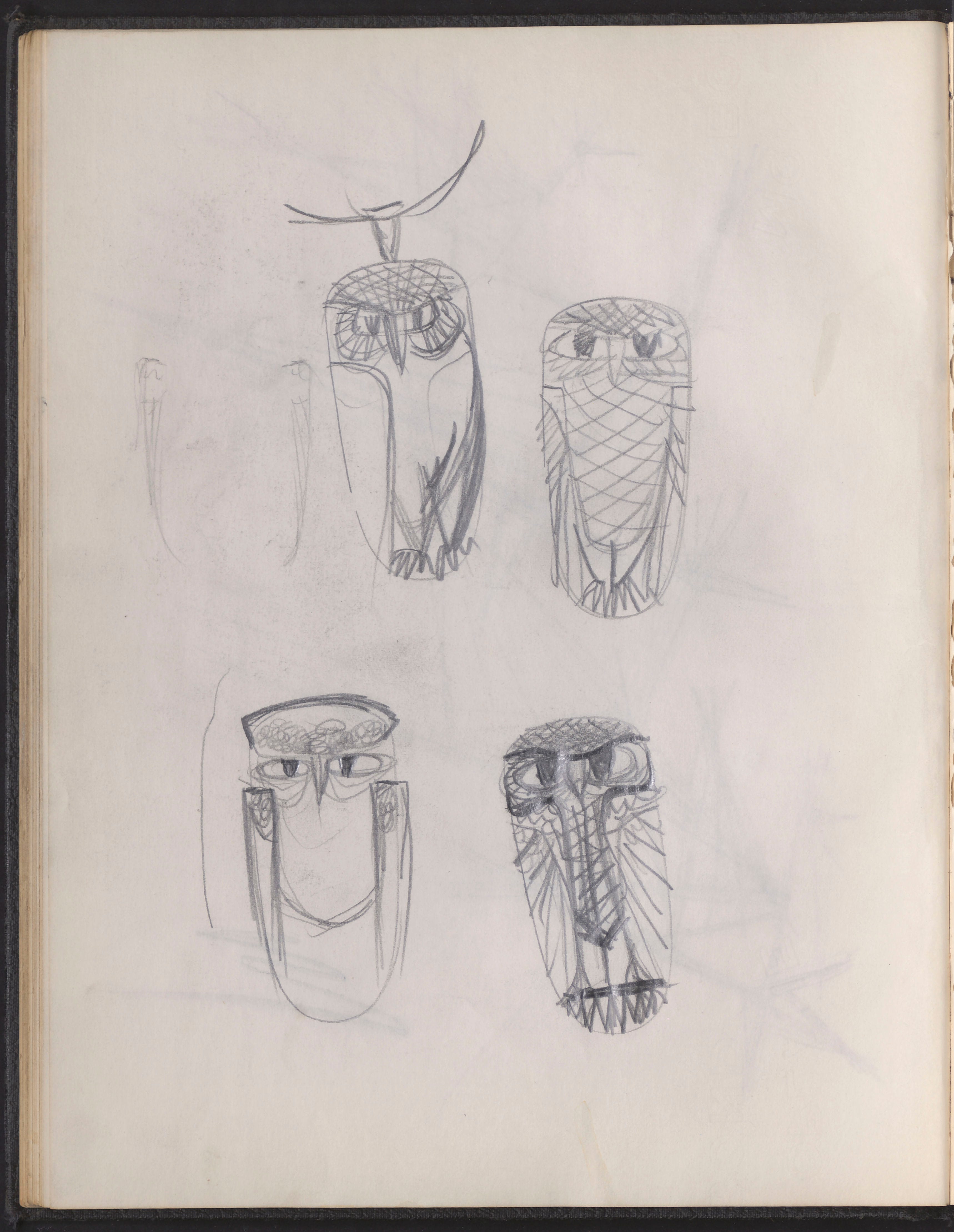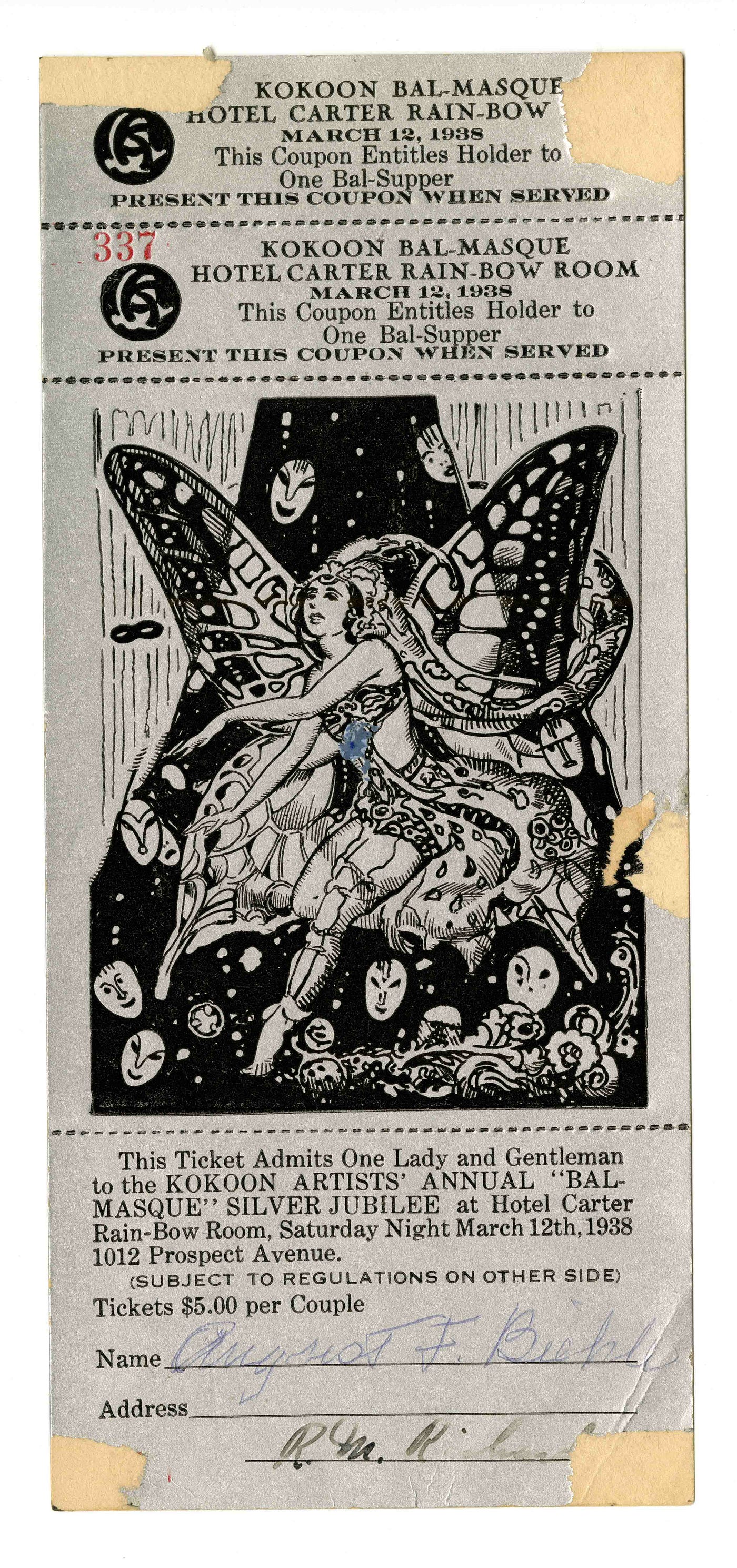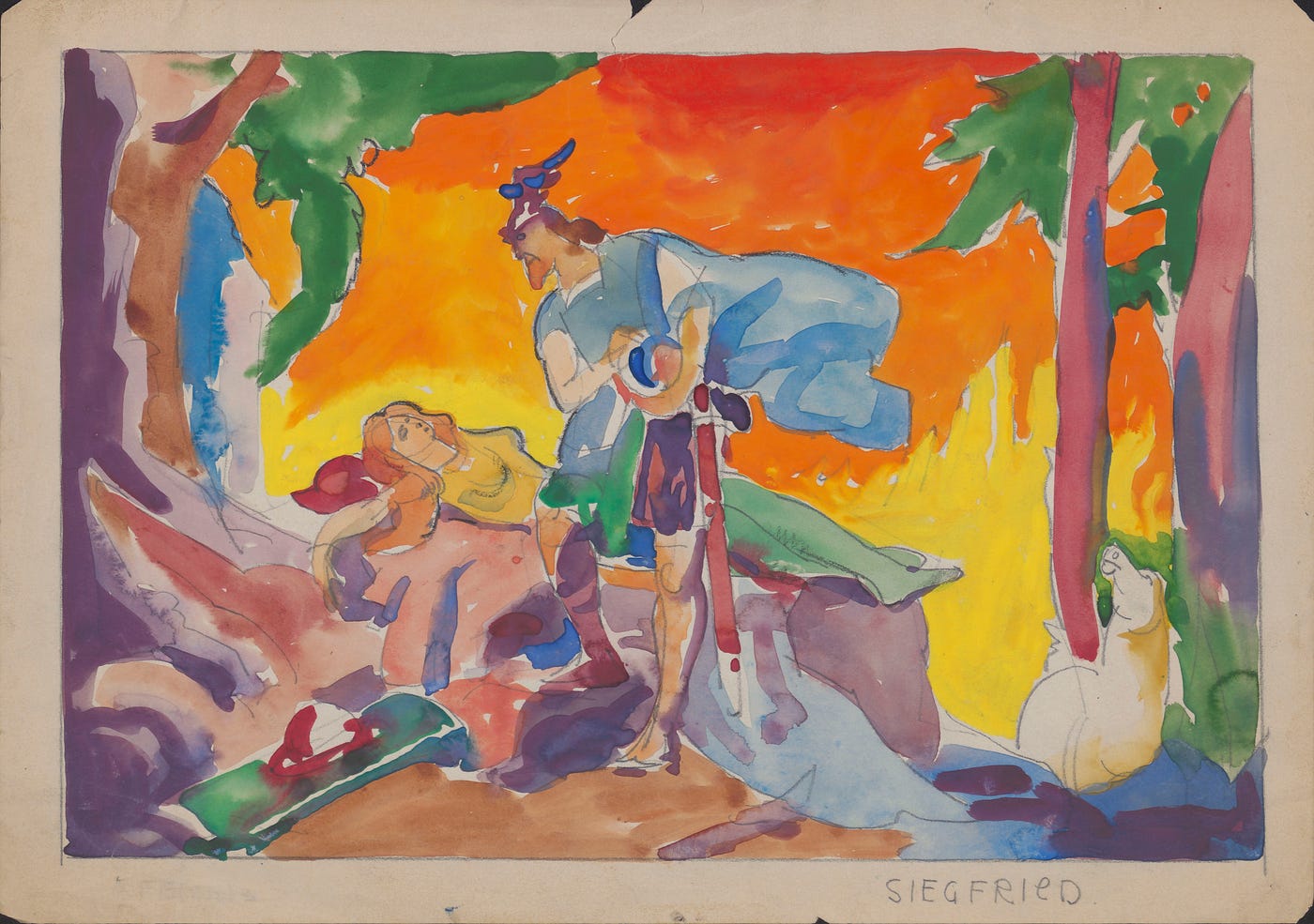By Sara Kunkemueller, Digitization Intern, Ingalls Library and Museum Archives
This summertime, I joined the Ingalls Library and Museum Archives as a digitization intern. My work associated quite a few initiatives, from updating metadata to scanning publications for the Online Archive, but considerably of my time was committed to digitizing artists’ collections in the archives. The to start with materials I scanned ended up John Paul Miller’s sketchbooks.
Miller (1918–2013) was a renowned Cleveland jeweler. Having graduated from the Cleveland Institute of Artwork (CIA), he returned soon after Military company in Planet War II to sign up for the school’s employees as a professor. At the same time, he started generating parts for area jewellery shop Potter & Mellen. However Miller was educated in industrial design and put in his profession concentrated on jewelry, he also harbored a deep really like for watercolor and developed equally pictures of his travels and a variety of video materials. During his tenure at the CIA, long lasting a lot more than 40 decades, he taught all these topics. Miller’s do the job has been obtained by several private collectors as properly as by the Cleveland Museum of Artwork (CMA) and the Renwick Gallery, among the many others.
Miller is regarded for his use of granulation, a procedure most effective acknowledged from archaeological jewelry. Via the granulation procedure, tiny beads of steel are affixed to a larger type without the need of soldering. Miller employed granulation to create really complex area textures and styles. Concentrating on each geometric abstractions and realistic animal and insect forms, Miller’s use of granulation lends his overall body of get the job done an in general stylistic coherence, weaving a modernist aesthetic into organic surfaces. His sketchbooks are filled with repetitive drawings, the place Miller plays with the variety of the granulation sample. Since Miller’s sketches are comparatively close in sizing to his remaining solutions, there are numerous pieces in the CMA’s collection, in the archives’ Could Show information, and in other artwork galleries that can be matched virtually accurately to these web pages.



Miller’s sketchbooks augment his entire body of work with in-depth notes on development, which includes experimental notes built in the workshop. Quite a few are stuffed with metallic dust, and even smaller scraps of discarded gold, suggesting that they lived on his workbench and that patterns had been subject to revision during manufacturing. In a person instance, Miller wrote out directions for a brief movie subsequent the generation of just one of his parts, leaving at the rear of a meticulous file of his method. Alongside with costs and other data, the inside covers regularly have a record of names or titles indicating which functions of his were commissioned, produced for a specific display, or produced in collection. Within just sketchbook 19, there is also a lengthy handwritten insurance plan appraisal detailing the minutiae of a piece’s building, from components to strategies. All of this is suitable to potential collectors and conservators of Miller’s work, but it also preserves his in depth expertise of metalworking and could perhaps serve as a training assist. Miller’s sketchbooks comprise a prosperity of information about his pieces, his training practices, and his personal and specialist interests.
All 32 of Miller’s sketchbooks are currently available on the CMA Archives’ electronic collections. Also accessible to see are comprehensive renderings of his rings and pendants, images from his outings to California and Antarctica, and photos of his will work from the May possibly Clearly show selection.
The remainder of my internship concentrated on the archives’ August F. Biehle Collection, composed principally of sketch components relating to a variety of media and projects throughout Biehle’s prolific vocation. A son of German immigrant and attractive artist August Biehle Sr. (also represented in the electronic archives), Biehle (1885–1979) was a Clevelander who contributed immensely to the city’s booming artistic character in the early 20th century. Soon after completing his artwork schooling in Germany, Biehle returned to Cleveland just as it was reaching its peak of inventive innovation and began doing the job at the Otis Lithograph Company. More than the course of his occupation, he produced amazing ads, murals, and paintings and became 1 of the most prominent Cleveland college artists.
Biehle was also a member of the city’s preeminent eclectic artwork firm, the Kokoon Arts Club. He brought with him each creative talent and inspiration, acquiring seen an influential exhibition of Der Blaue Reiter (The Blue Rider), a German Expressionist group, in Munich in 1912. This educated Biehle’s personal modernist functions and, in turn, proved to be a stylistic influence for other club associates. The archives’ assortment has a range of Kokoon Club objects, which includes posters for club gatherings, publication materials, and ticket styles for the club’s popular and lascivious balls. The Kokoon Club permitted Biehle to experiment with his official artistic coaching, and the conversation amongst the club’s flourishing modernists inspired him to delve into a wide range of models, together with the developing Artwork Deco and Cubism actions.

Of unique be aware in the Biehle assortment are sketch supplies relating to murals he developed for a number of notorious buildings throughout the town, together with the Kokoon Club, the Hofbräuhaus, and Herman Pirchner’s Alpine Village Theatre Cafe. These mural sketches, normally rendered loosely in gouache on paper or board, are putting not only simply because of their magnificence but also due to the fact really couple visible records of the murals continue to be. The Kokoon club, for example, featured a number of Biehle operates on its partitions in the course of its heyday. On the other hand, right after the club’s decline and disbandment in 1956, Biehle’s murals have been demolished with the making. This is also correct of his substantial function in Pirchner’s Alpine Village, notably Biehle’s depictions of fantastical scenes and basic moments from opera and theater. His affect extended to the Eldorado Club over the cafe, wherever Pirchner hosted popular guests. In 1996, nonetheless, that structure was razed as perfectly. Although there are some photographic records that contains Biehle’s demolished mural is effective, they are usually concentrated on society activities and the individuals who frequented the spaces fairly than on the artwork alone. The sketch renderings of Biehle’s murals are some of the ideal remaining documentation of his presence all through influential structures in the city.

Outside of Cleveland, Biehle represents a terrific encapsulation of the explosion of creative innovation in the early 20th century. Stylistically adventurous, Biehle’s pursuits shifted above the study course of his occupation. He was a gifted decorative artist, having apprenticed under his father, and his lithographs were being in direct dialogue with other critical advertisers of his age. Biehle’s industrial operates contain great experiments of his peers’ creations, these kinds of as numerous layouts for the Arrow Collar adverts that designed American artist Joseph Christian Leyendecker (1874–1951) well-known, as perfectly as various observational research that clearly show the depth of his official training. Biehle’s prints were being at the forefront of the shift from Art Nouveau to Art Deco. In the later sections of Biehle’s occupation, his paintings took on a putting Cubist type and ended up imbued with the dynamism of Futurism. His numerous talents make him an superb case in point of the toughness of Cleveland’s creative scene at its height.
Biehle’s other do the job incorporates a variety of colourful painted landscapes influenced by Cubism. The CMA retains in its assortment a person these types of portray as perfectly as will work on paper by the artist. To see the Biehle assortment on the net, be sure to pay a visit to https://digitalarchives.clevelandart.org/digital/collection/p17142coll15.

